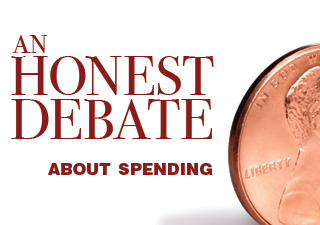Media

Dubious Deficit Discussions
Just how big is Pennsylvania’s structural deficit? And what does that term even mean?
Although some news outlets reported Gov. Wolf and legislative leaders came to an agreement on the size of the deficit, The PLS Reporter published a story to the contrary. The Wolf Administration continues to put the budget deficit at more than $2 billion while House and Senate Republicans say the budget shortfall is closer to $1 billion.
So who’s right? According to revenue estimates provided by the Independent Fiscal Office (IFO), Republicans have the edge in the deficit debate.
| Projected Structural Budget Deficit (Totals in Millions) | ||
| 2014-2015 | 2015-2016 | |
| IFO Revenue Projection | $30,540 | $30,722 |
| Less Tax Refunds | ($1,287) | ($1,275) |
| Beginning Balance | $81 | $376 |
| Prior Year Lapses | $90 | $0 |
| Total Revenue Available | $29,424 | $29,823 |
| IFO Projected Spending | $29,048 | $30,777 |
| End Year Balance | $376 | ($954) |
| Sources: Independent Fiscal Office 2015 June Revenue Estimate; 2015-2016 Governor’s Executive Budget | ||
Over the past few months, revenues have surged above the original estimates, making Pennsylvania’s short-term budget picture look less bleak.
But even this budget “deficit” assumes a $1.7 billion increase in spending. In fact, projected spending increases will cause deficits for at least the next five years. This is the “structural deficit” referred to above. However, for this year, lawmakers can balance the budget simply by slowing the growth in spending.
By keeping spending growth at or below the cap established by the Taxpayer Protection Act, or a $498 million spending increase in the next fiscal year, the state would be on target to end the fiscal year with a $277 million surplus.
| 2015-2016 Budget Outlook Under TPA (In Millions) | |
| IFO Revenue Projection | $30,722 |
| Less Tax Refunds | ($1,275) |
| Beginning Balance | $376 |
| Total Revenue Available | $29,823 |
| Spending Under TPA | $29,546 |
| End Balance | $277 |
To be sure, addressing the state’s long-term structural budget problems requires tackling pension reform and controlling welfare costs. But balancing this year’s budget doesn’t require tax hikes.